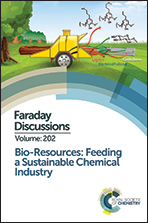Challenges in the development of bio-based solvents: a case study on methyl(2,2-dimethyl-1,3-dioxolan-4-yl)methyl carbonate as an alternative aprotic solvent†
Abstract
Many traditional solvents have drawbacks including sustainability and toxicity issues. Legislation, such as REACH, is driving the move towards less hazardous chemicals and production processes. Therefore, safer bio-based solvents need to be developed. Herein, a 10 step method has been proposed for the development of new bio-based solvents, which utilises a combination of in silico modelling of Hansen solubility parameters (HSPs), experimental Kamlet–Abboud–Taft parameters, a selection of green synthetic routes followed by application testing and toxicity measurements. The challenges that the chemical industry face in the development of new bio-based solvents are highlighted through a case study on methyl(2,2-dimethyl-1,3-dioxolan-4-yl)methyl carbonate (MMC), which can be synthesised from glycerol. Although MMC is an attractive candidate as a replacement solvent, simply being bio-derived is not enough for a molecule to be regarded as green. The methodology of solvent development described here is a broadly applicable protocol that will indicate if a new bio-based solvent is functionally proficient, and will also highlight the importance of early stage Kamlet–Abboud–Taft parameters determination and toxicity testing in the development of a green solvent.
- This article is part of the themed collection: Bio-resources: feeding a sustainable chemical industry


 Please wait while we load your content...
Please wait while we load your content...